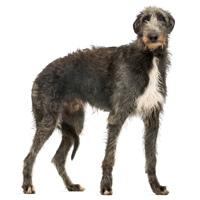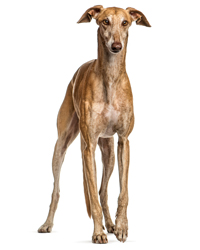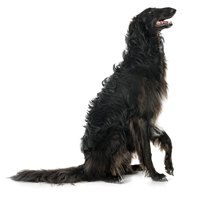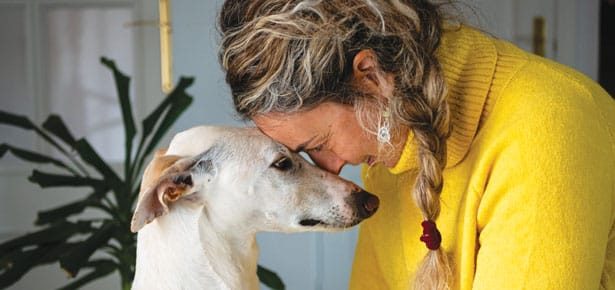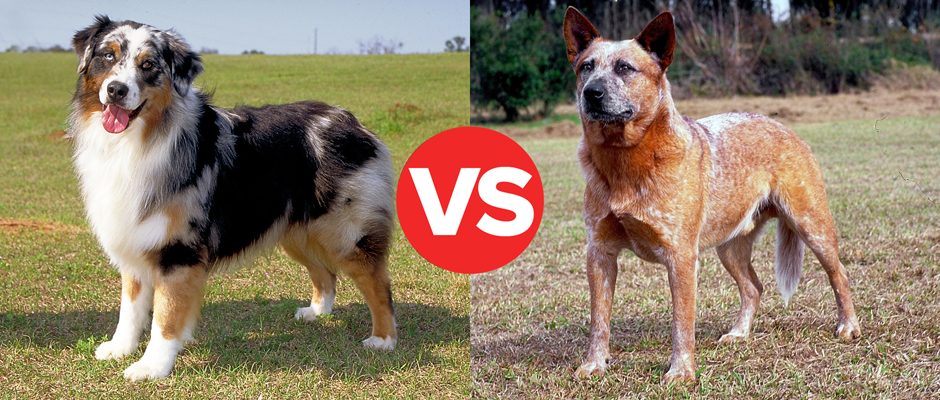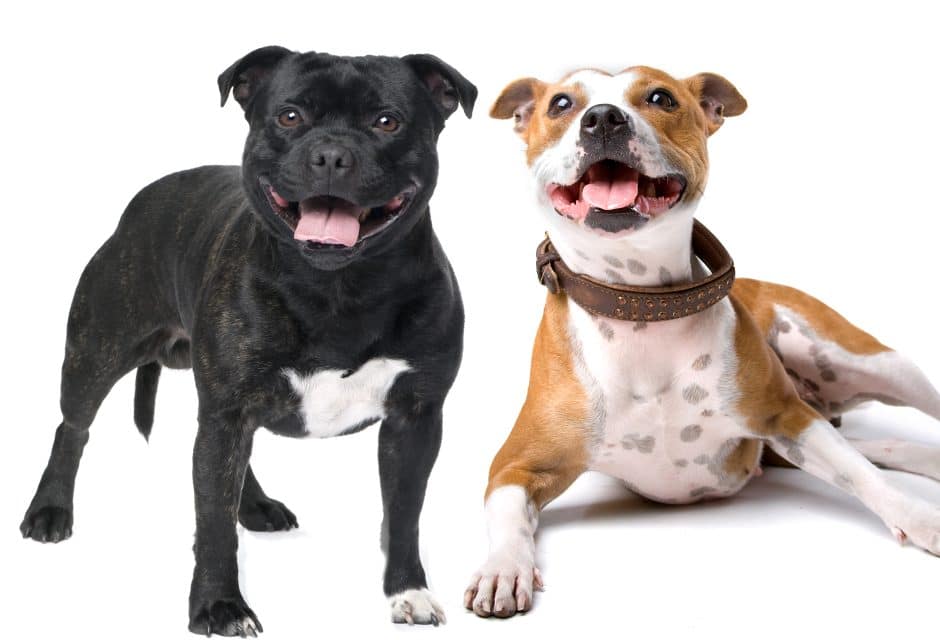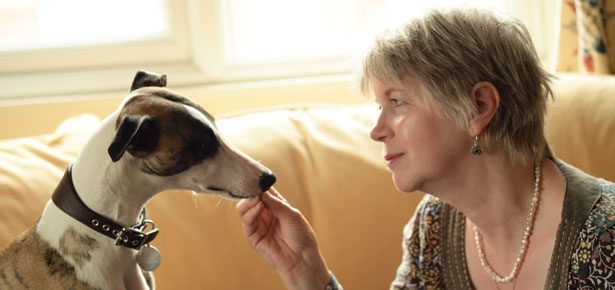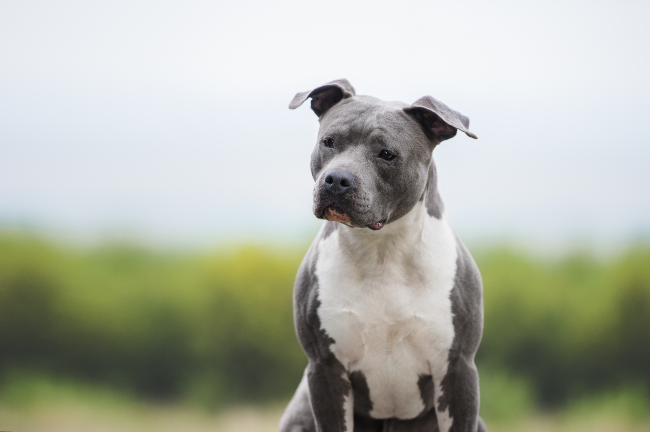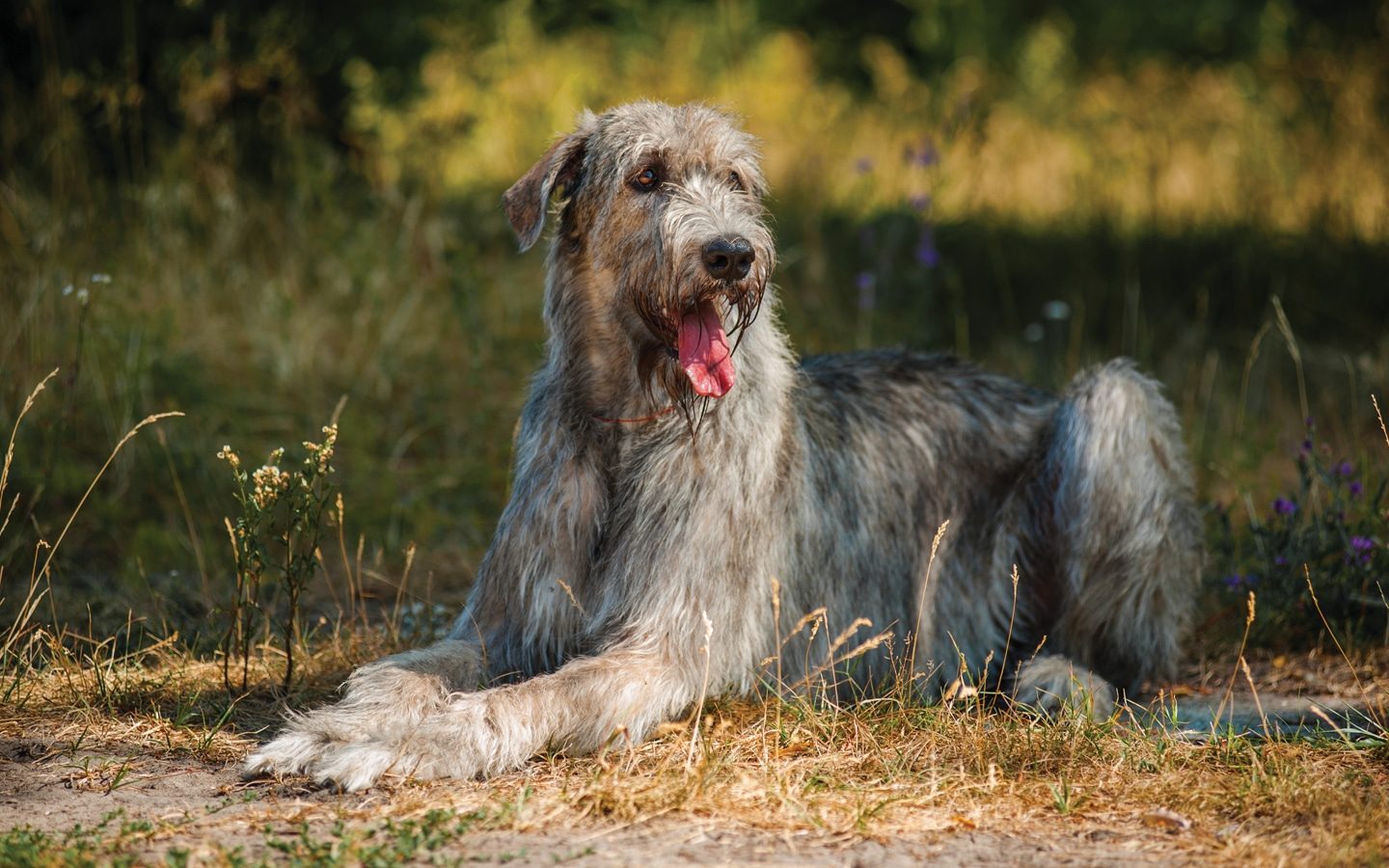
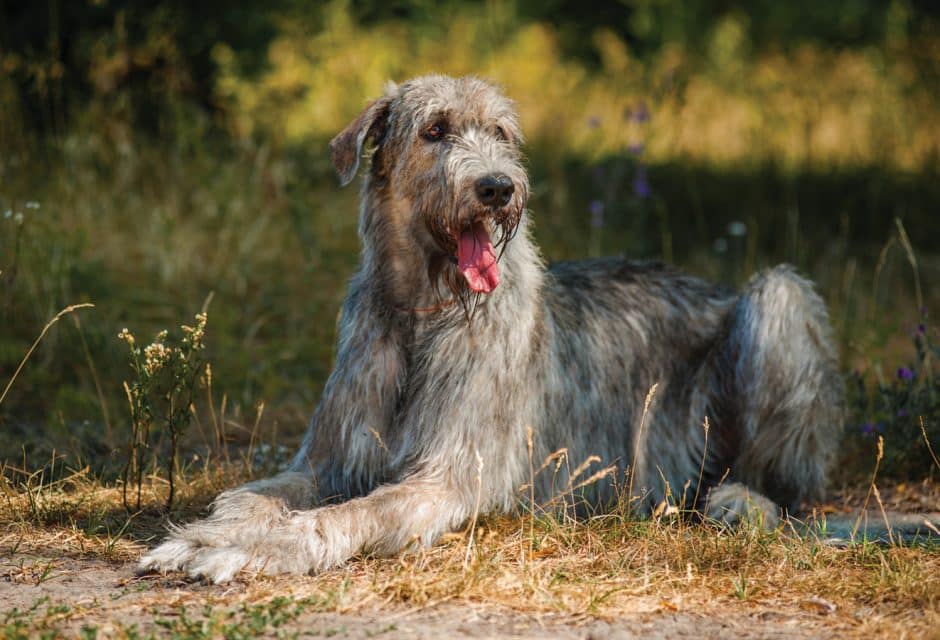
The Irish Wolfhound
Calm, dignified, kindly: is the Irish Wolfhound—the tallest dog breed—right for you? Read on to find out!
“Gentle when stroked, fierce when provoked!” they say of the Irish Wolfhound. From its early history on the battlefield to its current status as a beloved pet, here’s a closer look at one of the dog world’s legends.
Irish Wolfhound Stats At a Glance 
Irish Wolfhound Early History
The Irish Wolfhound is an ancient breed. The earliest written record dates all the way back to 391AD and pertains to seven Wolfhounds gifted to Quintus Aurelius in ancient Rome, where the immense dogs proved a source of great wonder and reverence.
It is thought the Irish Wolfhound descended from the ancient Roman war dogs—large, deep-chested, powerful dogs used to hunt and assist in battle. It’s likely they brought their dogs along when they invaded Ireland in 1st century AD. Large, barrel-chested dogs were also used by the Vikings, who invaded Ireland in the 9th and 10th centuries. Speculation, based upon physical similarities, is that the Irish Wolfhound is a descendant of these strong, enormous dogs.
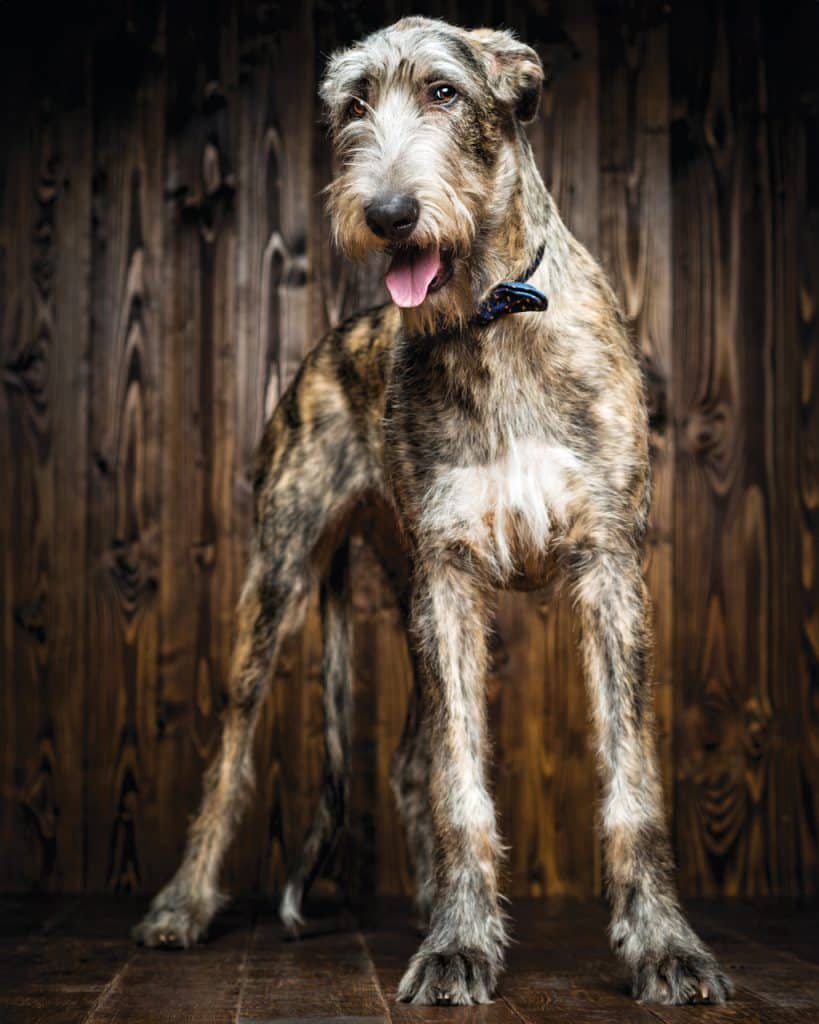
FalconScallagrim/iStock
Whatever its earliest origins, the Irish Wolfhound was used as a war dog by the Celts in their homeland. Large packs of Wolfhounds were sent into battle to drag soldiers from horses and chariots. It can be hard to distinguish fact from legend, but it is said that Cormac mac Airt, one of the High Kings of Ireland, had a pack of 300 Wolfhounds used for battle.
Fearless Hunters
The Irish Wolfhound was also, of course, used for hunting. Wolves, boar, and elk once existed in great numbers in Ireland. Dogs used to hunt these animals needed to be fast enough to catch a wolf and strong enough to kill it. Many breeds participated in these hunts, but none could match the Irish
Wolfhound’s combination of speed, power, and prey drive.
The Irish Wolfhound was a dog reserved exclusively for royals and members of the nobility. Visiting royals or ambassadors were often given packs of these dogs as a very precious gift. But the habit of giving packs away and refusing to allow commoners to own them nearly spelled the end of the breed. By the mid-1600s, so few were numbers that Oliver Cromwell, Lord Protector of England, banned their export from Ireland. It’s likely his decision saved the breed from extinction—however, other threats to the Irish Wolfhound would follow.
Get to Know the Irish Wolfhound
- Giant– special considerations arise
- Calm and even-tempered
- Very patient with children
- Incredibly loyal to his family
- The tallest breed on the planet
- Can be a little aloof with strangers
- Loves to run, but satisfied with daily walks
The Irish Wolfhound: A Breed At Risk
Today, we know that wolves are apex predators whose presence has very positive impacts on ecosystems. In the 1600s and 1700s, wolves were greatly misunderstood—a threat and one to be eliminated. Humans wanted wolves killed, and the Irish Wolfhound proved so good at the task that, by the late 1700s, wolves were extinct in Ireland.
Jobless, the breed’s numbers dwindled. Then came 1798 and the ill-fated Irish Rebellion—a violent uprising against British rule. The Irish Wolfhound—seen by the British as a symbol of Irish resistance—was slaughtered in great numbers. The British were so keen to obliterate this revered symbol of Irish heritage that they offered rewards to anyone who presented them with the head of a Wolfhound. Before long, Ireland’s gentle giant was extinct.
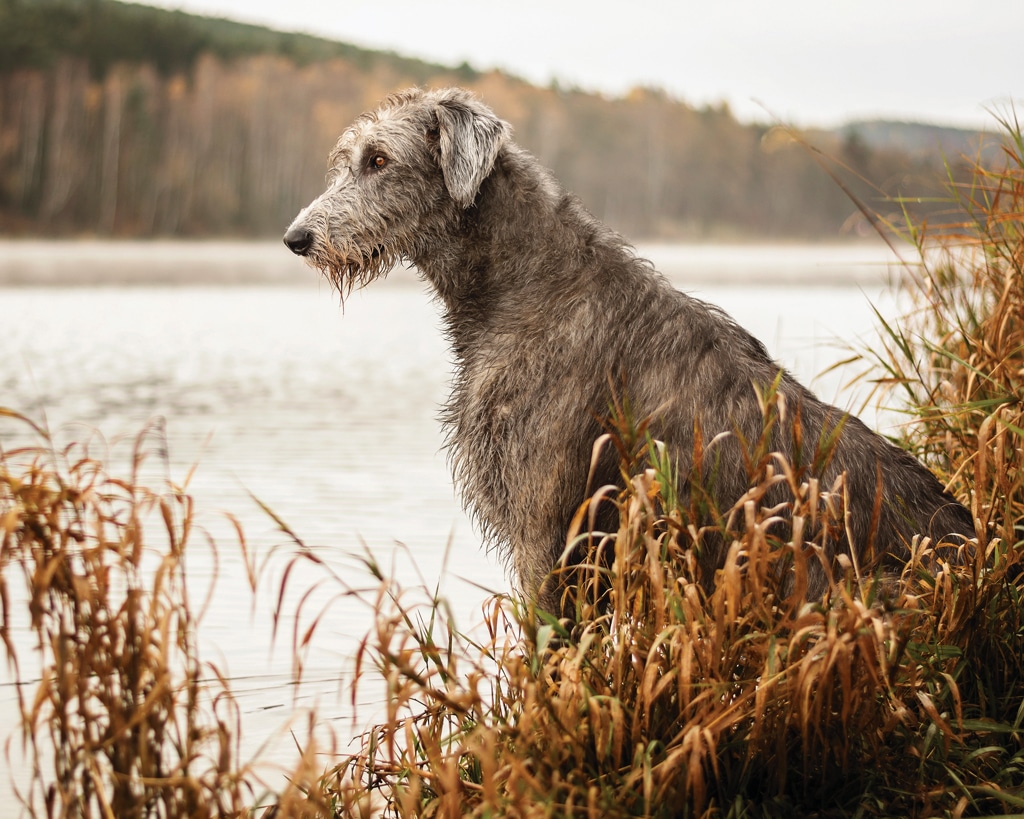
Kamila-Veresova/iStock
A Turning Point
George Graham, a retired British Army officer, felt such an affinity for these dogs that he became determined to resurrect the breed. At this point, it’s widely agreed that the true, original Irish Wolfhounds were extinct. However, Graham was armed with information, and he set forth with his plans to—if not revive—recreate the breed in the mid-1800s.
A Second Chance for the Wolfhound
Graham scoured the country for authentic Irish Wolfhounds but ultimately had to introduce other breeds to accomplish his goal. He found and used crossbreeds whose lineage could be traced back to Irish Wolfhounds. From here, he added a variety of large, deep-chested breeds, including Deerhounds, Borzois, Mastiffs, Great Danes, and the Tibetan Kyi Apso.
This labour of love spanned more than two decades, during which time Graham successfully developed the Irish Wolfhound as we know it today. He founded the Irish Wolfhound Club in 1885 and remained involved in the breed’s development until his death in 1909.
Fun Facts
+ Many fanciers believe this is one of the quirkiest, funniest breeds around.
+ Its history is shrouded in ancient Irish myths and legends.
+ Likes to give hugs and can stand as high as 7 feet.
Coming to America
Thanks to Graham’s work, interest in the breed was renewed. Irish Wolfhounds arrived in New England as early as the 1630s, but the breed remained extremely rare in North America for another two centuries. In 1897, the Irish Wolfhound was recognized by the American Kennel Club (AKC). By the time the Irish Wolfhound Club of America was founded in 1926, the breed was still a very rare sight, and only a handful of dogs had been registered.
Serious Stature: the Tallest Dog Breed
The Irish Wolfhound is the tallest dog in the world. Males standing upright to give their owners a hug (yes, really!) can exceed seven feet tall. The AKC Standard sets a minimum height at the shoulder for males at 32 inches; 30 for females. Ideal weights are 120 pounds for males and 105 pounds for females. The Irish Wolfhound’s double coat is rough and wiry and accepted in an array of colours, including gray, brindle, red, black, pure white, and fawn. The head appears long because it’s proportionate to the body. Long hair falls over the eyes and can also form a beard, lending a dapper air.
Living with the Irish Wolhound
Irish Wolfhounds are calm, good-natured, and love to be with their people. They are sensitive and crave companionship—this is a Velcro dog that wants to be always with you.
The Wolfhound is affectionate but, in true hound character, can be a little aloof with strangers. With other large dogs, they tend to play well. Caution is advised around small dogs as well as cats, bunnies, or other small pets. The Irish Wolfhound may no longer be chasing down wolves, but prey drive remains, and introductions to smaller animals should be handled carefully.
Many consider the Irish Wolfhound one of the most gentle and loving dogs when it comes to kids. Here again, simply owing to their immense size, caution and supervision around small children is advised.
The Irish Wolfhound’s ideal home has the space he requires—inside and out. A large yard is ideal, and fencing is an absolute must.
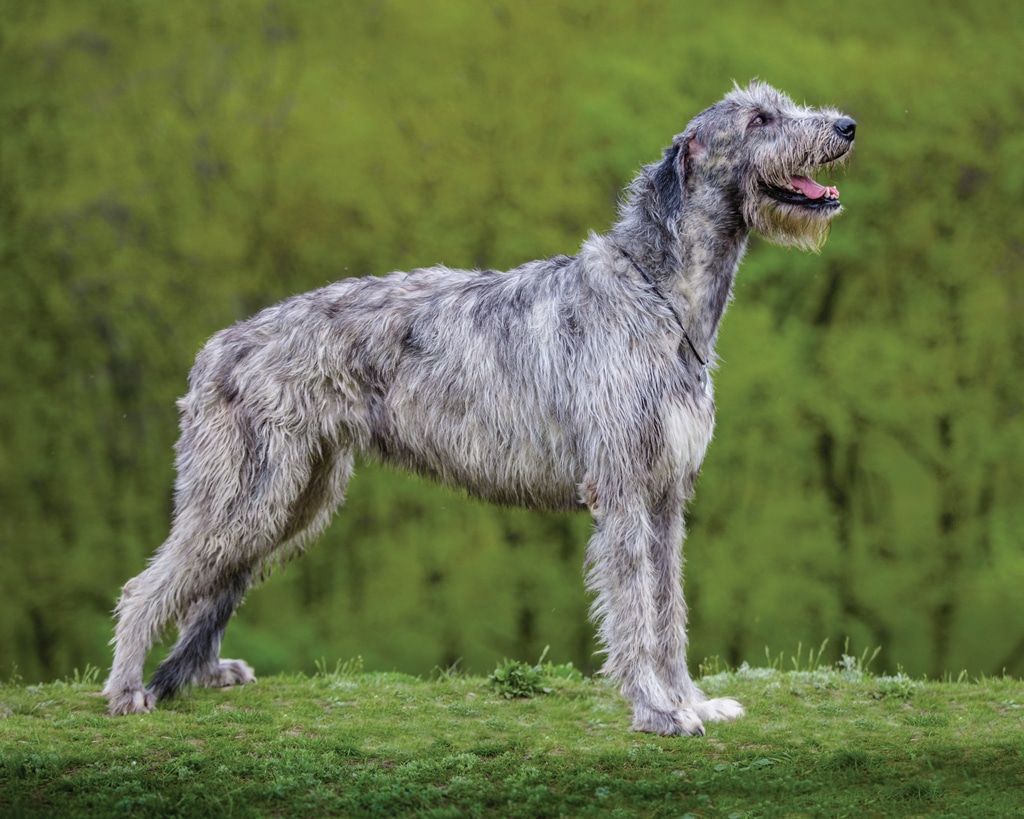
Ashva/iStock
Training and Socializing Your Irish Wolfhound
When you’re living with a giant breed, training is vitally important. An unruly puppy can grow quickly into a massive, powerful problem. Start right at the puppy stage and commit to using only positive-reinforcement techniques. Irish Wolfhounds are very sensitive—big softies, really—and will not respond well to harsh corrections.
As for training, this is a sighthound, and if you’ve lived with one…you know. They can be, how shall we say, independent thinkers. Many speak of canine intelligence in the context of how keen a dog is to do someone’s bidding. Sighthounds sometimes get a reputation for being unintelligent; in reality, they just are not very biddable. That said, your Irish Wolfhound will learn good manners from you if you find a way to engage and get them excited to learn.
Profile: The Irish Wolfhound
Size: Giant
This is the tallest breed in the world. Weights range form 105 pounds (females) to 120 pounds (males).
Activity Level: 3/5
Daily exercise and ideally a backyard to run and cavort in is ideal.
Grooming: 2/5
Moderate. The double-coat sheds moderately year-round. Weekly brushing and the occasional bath will keep your Irish Wolfhound looking dapper.
Heritage:
Developed in Ireland for battle and hunting wolves, board, and elk.
For more information on Irish Wolfhound rescue in the U.S., visit iwclubofamerica.org/rescue. In Canada, visit iwcc.ca/en_ca/rescue-2.
Activities for Irish Wolfhounds
The Irish Wolfhound requires some room to roam, and it’s no surprise that they love to run. They’ll be happy with long daily walks but a yard with some room to gallop is ideal. Lure coursing is an obvious sport. It’s truly a joy to watch these dogs in their element. This breed is versatile enough to tackle other sports and activities, too.
Caring for the Gentle Giant
The Irish Wolfhound is a natural beauty, the coat requiring only weekly brushing. The Irish Wolfhound sheds throughout the year, as compared to some breeds that blow their coats seasonally.
As with all purebreds, the Irish Wolfhound is prone to some disorders and genetic diseases. It’s important to ensure that the breeder you’re working with screens their dogs and is truly committed to the health and longevity of their breed.
On that last point, there is a final consideration. As with most giant breeds, the Irish Wolfhound’s lifespan is short. Six to seven years is the average life expectancy.
This is a truly extraordinary dog. From the breed’s ancient origins and fascinating history to its status today as a beloved pet, the Irish Wolfhound is truly a living legend.
If you like the Irish Wolfhound, you might consider the…
Scottish Deerhound Greyhound Borzoi
The inset photos left to right: Life on White/Bigstock, Eric Isselée/AdobeStock, cynoclub/Bigstock
» Read Your Breed For more breed profiles, go to moderndogmagazine.com/breeds
This article originally appeared in the award-winning Modern Dog magazine. Subscribe today!
Join the newsletter and never miss out on dog content again!
"*" indicates required fields
By clicking the arrow, you agree to our web Terms of Use and Privacy & Cookie Policy. Easy unsubscribe links are provided in every email.

